Excerpts from Jim Conrad's
Naturalist Newsletter
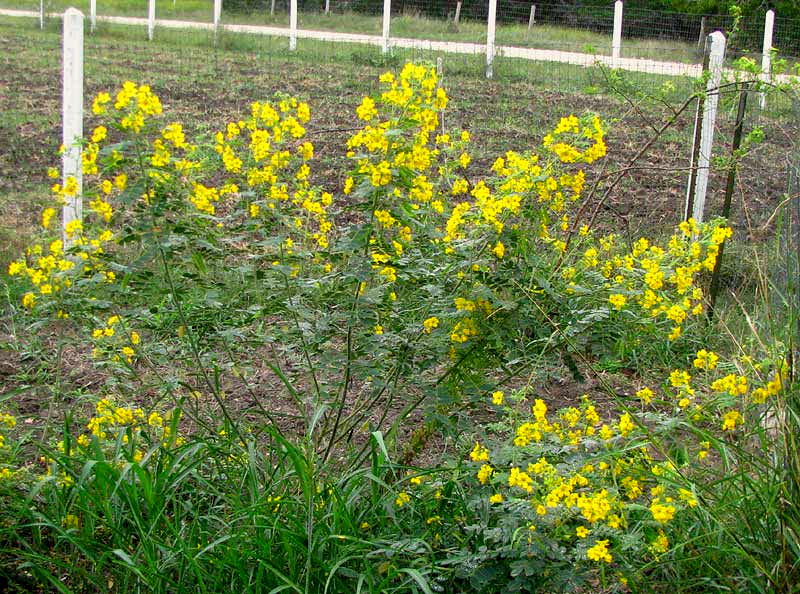
from the the September 16, 2012 Newsletter issued from the valley of the Dry Frio River in northern Uvalde County, southwestern Texas, on the southern border of the Edwards Plateau; elevation ~1750m (~5750 ft); N29.62°, W99.86°; USA
VELVET-LEAF SENNA
Outside my kitchen window, as well as along roads, on ledges beside the river and many other places, there's a six-ft-tall (2m), much branched shrub nowadays absolutely resplendent with brightly yellow, 1¼-inch-wide (33mm) flowers, as shown above.
Up close you can see its pinnately compound leaves, legume-type fruits, and flowers of a special kind:
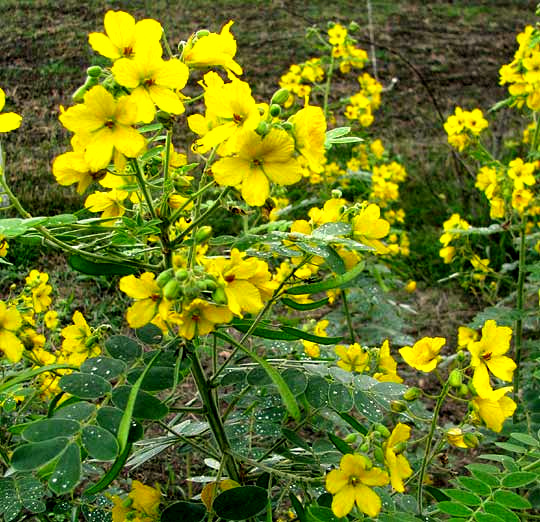
What's special about the flowers is that of their nine or ten stamens only six to eight produce pollen, the others being smaller and sterile. The anthers curve upwards, and instead of pollen being shed from slits along the anthers' sides, the grains exit by pores at the anthers' tops or bottoms. "Normal" flowers have stamens of equal lengths with straight anthers with slits along their sides. You can see a flower close-up displaying this flower's curiosities below:
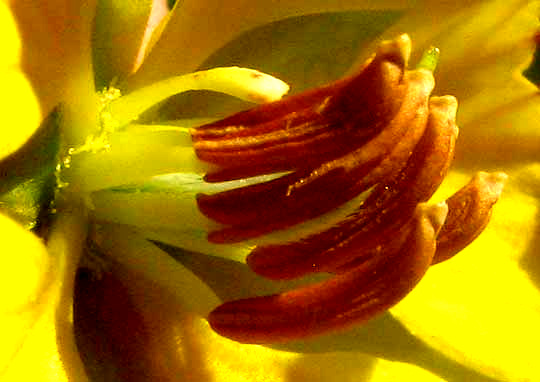
Especially in Mexico we've seen several bushes and trees belonging to this plant group, the sennas, which are members of the enormous Bean Family. This is SENNA LINDHEIMERIANA, variously known in English as Velvet Leaf Senna, Lindheimer's Senna, Velvetleaf Senna, Velvet-leaf Wild Sensitive-plant and Puppy-dog Ears. From the names you might guess that the leaves are softly hairy, which is the case, as shown below:
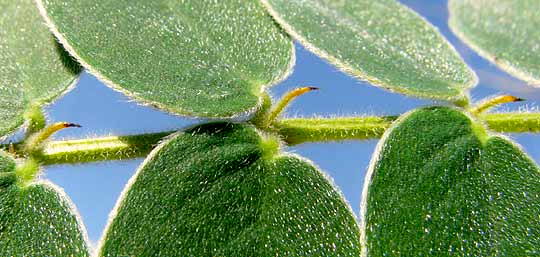
Besides the velvety leaflets, another good field mark of the Velvet Leaf Senna is that on the compound leaf's rachis there are slender, upward-pointing, curved, sharp-pointed, black-tipped glands between the connection points for each pair of leaflets in the leaf. In most sennas glands occur only between the lowest pair of leaflets.
Velvet Leaf Senna extends from arid northern Mexico into southwestern Texas, southern New Mexico and southeastern Arizona.
One reason the plant may be so common here in cow country is that it's poisonous to cattle, who avoid it, thus giving the bush a competitive advantage over other bushes cattle find more palatable.
from the March 23, 2014 Newsletter issued from the Frio Canyon Nature Education Center in the valley of the Dry Frio River in northern Uvalde County, southwestern Texas, on the southern border of the Edwards Plateau; elevation ~1750m (~5750 ft); N29.62°, W99.86°; USA
SENNA LEGUMES DROPPING BEANS
Nowadays the Velvet Leaf Senna's flowers and leaves are all gone, but dangling from the tips of last season's slender stems you find clusters of brown, legume-type fruits. At this season the legumes are splitting along their entire lengths, revealing inside orderly rows of little brown seeds, or beans, as shown below:
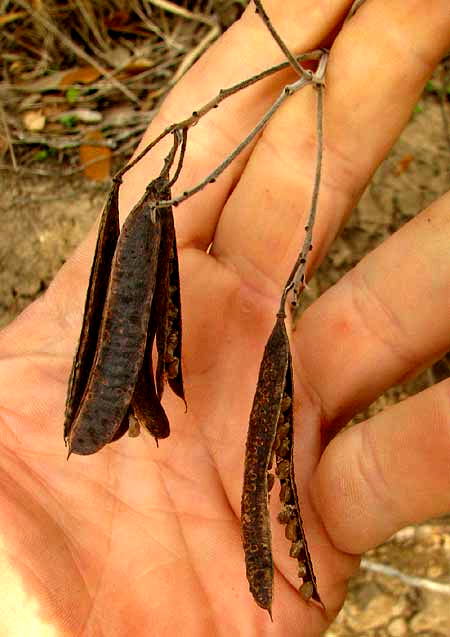
A close-up of the beans showing each one attached to the legume pod's wall by threadlike, curvy funiculi (singular funiculus) is shown below:
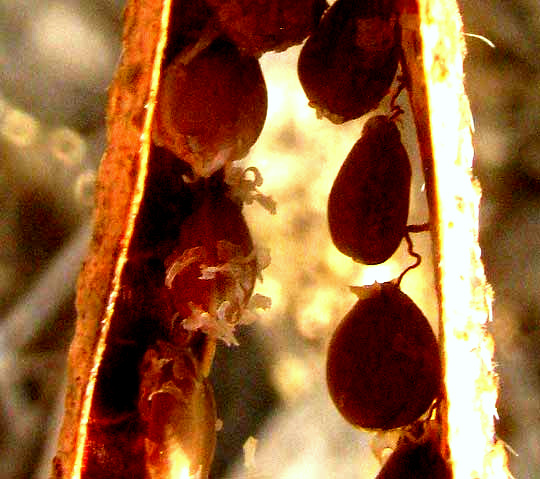
I'm guessing that the tattered, papery material peeling off the beans is the remains of the epidermis of the seed coat, or testa. In some seeds upon reaching maturity the epidermis ruptures and sloughs off, enabling the seeds to dry better.
Whatever the case, it's pleasing to see these well formed little beans all ordered exactly as they should be, ready to abandon their pod and usher forth new senna plants -- despite the drought and all the things going on in the world.